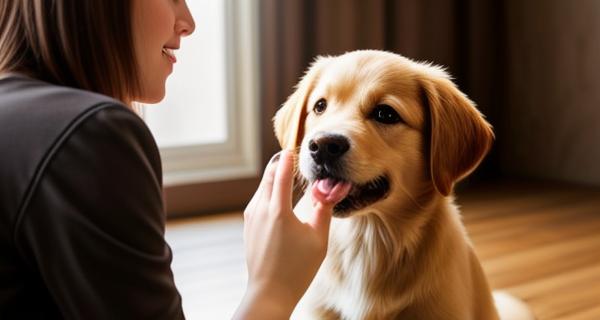Positive Reinforcement Dog Training: A Comprehensive Guide
Positive Reinforcement Basics
Positive reinforcement dog training is revolutionizing how we connect with our furry companions, offering a powerful alternative to traditional correction based methods. At its core, positive reinforcement dog training uses rewards—like treats, praise, and play—to encourage desirable behaviors, creating a joyful, trusting bond between dog and owner. This approach doesn’t just teach commands; it builds confidence, encourages genuine enthusiasm, and fosters long lasting obedience without fear or stress.
At the heart of effective positive reinforcement dog training is consistency. Dogs thrive on predictability, so rewarding the exact behavior you want immediately helps them make clear connections. Start with simple cues—sit, stay, come—and pair each correct response with a high value treat and enthusiastic praise like “Good job!” or a lively “Yes!” This reinforces the right action swiftly and joyfully, making training sessions engaging rather than tedious.
Begin in low distraction environments to minimize confusion, gradually increasing complexity as your dog gains skill. Use clear verbal signals combined with hand gestures to avoid confusion—consistency builds recognition fast. Don’t rush progress; celebrate small wins daily to keep motivation high for both pet and person.
Beyond obedience, positive reinforcement dog training nurtures emotional intelligence in dogs. It reduces anxiety by replacing pressure with encouragement, transforming training into a shared adventure rather than a chore. Dogs trained this way show lower stress levels, improved focus, and stronger attachment to their humans. They become eager learners, ready to explore new environments confidently.
This method also supports socialization—introducing your dog gently to people, sounds, and spaces through rewarding experiences builds resilience and friendliness. It’s especially effective for puppies and rescue dogs who benefit from gentle, patient guidance that builds trust quickly.
Modern dog training tools like clicker training amplify results by marking the exact moment of desired behavior with a distinct sound, followed instantly by reward. This timed reinforcement sharpens learning and accelerates progress, making sessions efficient and fun. Pairing this with visual aids or apps helps track performance over time, keeping owners motivated through measurable growth.
Choosing positive reinforcement dog training isn’t just about better behavior—it’s about respect: respect for your dog’s emotional needs, their pace, and their intelligence. It fosters authentic communication rooted in care and clarity. Whether you’re a first time owner or seasoned handler, embracing this approach cultivates a relationship built on mutual trust, joy, and clear understanding.
Start today with small, rewarding moments—your dog will thank you in every wagged tail and eager glance. The future of training is kinder, smarter, and infinitely more rewarding when built on positivity.
Effective Reward Systems
Positive Reinforcement Dog Training: A Comprehensive Guide
Unlock your dog’s true potential with Positive Reinforcement Dog Training—where rewards fuel respect, trust, and lasting behavior change. In today’s digital age, dog owners are ditching punitive techniques in favor of science backed methods that build strong, joyful bonds between humans and their four legged companions.
At the heart of **positive reinforcement dog training** lies a simple yet powerful principle: when your dog does something right, you reward it—immediately and consistently—so they learn what behaviors earn praise, treats, or play. This approach isn’t just kinder—it’s smarter. Studies show that dogs trained with rewards respond faster, retain commands longer, and display significantly less anxiety than those conditioned through fear or correction.
What makes positive reinforcement dog training so effective? It centers on clarity and timing. Whether you’re teaching a puppy to sit calmly or helping an older dog unlearn jumping, the reward—be it a small treat, enthusiastic praise, or a quick game of fetch—must follow the desired behavior within seconds. This instant feedback creates clear connections in your dog’s mind, turning training into joyful learning rather than stressful routine.
Common rewards used in positive reinforcement include high value treats (like tiny pieces of chicken or soft cheese), affection such as belly rubs, or energetic play sessions with their favorite tug rope. Even verbal encouragement paired with eye contact can act as a powerful reinforcer. The key is to tailor incentives to your dog’s unique personality—what excites one may flop on another—and to gradually phase out treats while maintaining enthusiasm and consistency.
Beyond basic commands, positive reinforcement scales effortlessly into advanced skills like leash manners, self control in distractions, or service behaviors for therapy dogs. It supports emotional well being by reducing stress and fear based responses, fostering confidence and focus. Plus, training sessions become quality time—deepening the bond between owner and dog through shared success and mutual respect.
Social media buzz is exploding around **positive reinforcement dog training**, with pet parents sharing viral clips of their pups mastering complex tricks using nothing but praise and rewards. Platforms like TikTok and Instagram showcase relatable, authentic moments that inspire millions to try reward based methods—proving this isn’t just a trend, it’s a transformative shift in how we care for our dogs.
Ready to build a stronger, happier relationship? Start small, stay consistent, and celebrate every step forward with genuine rewards. Positive reinforcement dog training doesn’t just shape behavior—it builds lifelong trust, one happy smile at a time. For proven tools, expert tips, and science backed techniques, explore the world of reward based training and watch your dog thrive.
This approach isn’t about perfection—it’s about progress. Every wagging tail and eager head shake is proof of success. Embrace positive reinforcement dog training today, and watch your bond grow stronger with every joyful moment shared.
Avoiding Punishment in Training
Positive Reinforcement Dog Training: A Comprehensive Guide to Strengthening Bond Without Fear
Every dog deserves training that fosters trust, confidence, and clear communication—without fear or punishment. Positive reinforcement dog training is the future of responsible pet ownership, empowering both you and your canine companion with kindness, consistency, and connection. At its core, positive reinforcement focuses on rewarding desired behaviors to encourage their repetition, creating a confident, eager to please mindset in your dog.
Why steer clear of punishment based methods? Traditional corrections may suppress unwanted actions—but they often breed anxiety, confusion, and even aggression. In contrast, positive reinforcement builds a foundation rooted in mutual respect. By associating good behavior with treats, praise, or play, your dog learns willingly rather than out of fear. The result? A happier, more cooperative pet who views training as an enjoyable experience.
This guide walks you through practical steps to implement effective positive reinforcement dog training:
Start by identifying the specific behaviors you want to shape—sitting, staying, walking politely on a leash—and use high value rewards immediately after the desired action. Timing is everything; reward within 1–2 seconds to create a strong mental link between behavior and consequence. Use consistent cues like “sit” or “left” paired with treats every time, gradually phasing out rewards as the behavior becomes reliable through intermittent reinforcement.
Incorporate play and affection into training sessions to keep motivation high. A quick game of fetch after earning a reward builds enthusiasm and deepens your bond. Keep sessions short (5–10 minutes) to maintain focus, especially for younger dogs or strong willed breeds. Use clear, calm verbal praise—your tone carries immense weight—and pair it with affectionate pets or gentle pats to reinforce positivity.
Consistency matters more than intensity. Whether at home, during walks, or in social settings like dog parks, keep your messages uniform: reward good choices consistently, gently redirect unwanted behavior without pressure. This builds reliable, long term responses. Track progress through positive logs—note milestones and celebrate small wins—to stay motivated and observe growth clearly.
Adopting positive reinforcement dog training isn’t just about correct conduct—it’s a holistic approach nurturing trust, happiness, and lasting obedience. By eliminating punishment, you invite cooperation, reduce stress, and create a relationship built on respect and joy. Invest in this method: witness your dog thrive as a confident, eager learner ready for any adventure. Embrace the power of encouragement—your next training session is just a reward away.
Building a Strong Dog-Owner Bond
Positive Reinforcement Dog Training: A Comprehensive Guide
Transform your bond with your furry companion through positive reinforcement dog training—where trust, understanding, and mutual respect become the foundation of a lasting relationship. Unlike outdated punishment based methods, this approach rewards desired behaviors with praise, treats, or play to encourage repetition, fostering genuine motivation in your dog without fear or stress.
At its core, positive reinforcement dog training emphasizes clarity and consistency, making it ideal for dogs of all ages and temperaments—from energetic puppies to senior dogs needing gentle guidance. By associating actions like “sit,” “stay,” or “shake” with immediate rewards, you create clear communication channels that simplify learning and deepen your connection. Over time, this method builds confidence not just in your dog’s behavior but in the trust they place in you—turning training sessions into joyful interactions rather than tedious chores.
The science behind positive reinforcement dog training reveals powerful results: dogs trained with encouragement show lower anxiety levels, improved social skills, and stronger emotional bonds with their humans. When rewards are given promptly after a good behavior, the association strengthens neural pathways that keep your pup engaged, eager to please, and deeply connected to you.
Beyond obedience, positive reinforcement nurtures responsible pet ownership and reinforces values of patience, empathy, and reward based communication—principles that extend far beyond training sessions. It empowers owners to address challenges like leash pulling, barking, or anxiety without harshness, replacing power struggles with cooperation and mutual understanding.
To maximize effectiveness, start small: identify key behaviors you want to reinforce and prepare high value rewards. Use consistent verbal cues paired with treats or affection immediately after desired actions, ensuring clarity in communication. Gradually increase difficulty as your dog gains confidence, keeping sessions short, fun, and stress free. Consistency is vital—reinforce each success promptly so your dog links action clearly with reward.
Incorporating positive reinforcement dog training into daily life also nurtures a calm, harmonious household where both pet and owner thrive. Whether mastering commands, reducing destructiveness, or building off leash recall, the process strengthens emotional ties that last. The bond formed through patience, respect, and shared joy becomes the foundation of a lifelong friendship—one built not on control but on connection.
Stay consistent, celebrate every win, and watch as your dog evolves into a well adjusted, loving companion rooted in trust and positivity. This isn’t just training—it’s building a relationship that lasts for years.




